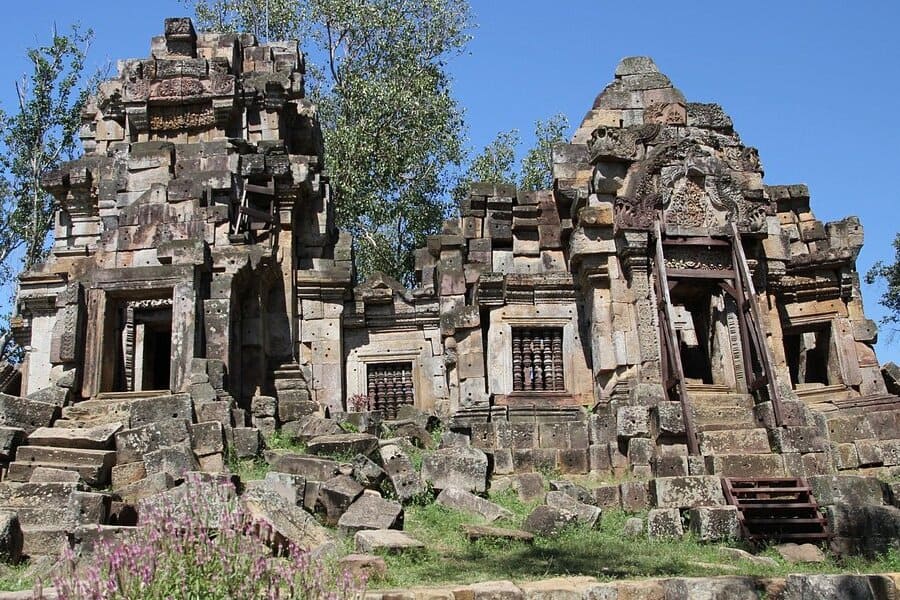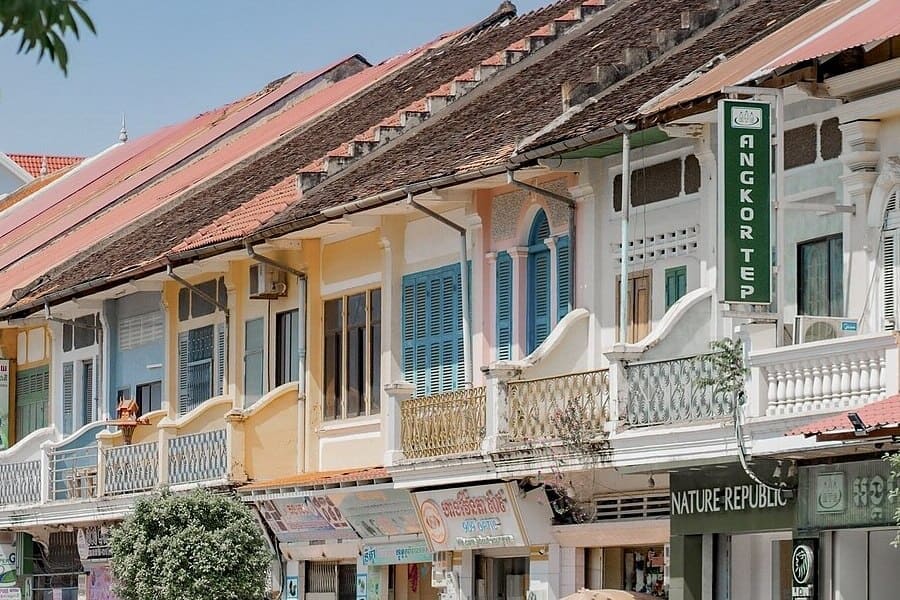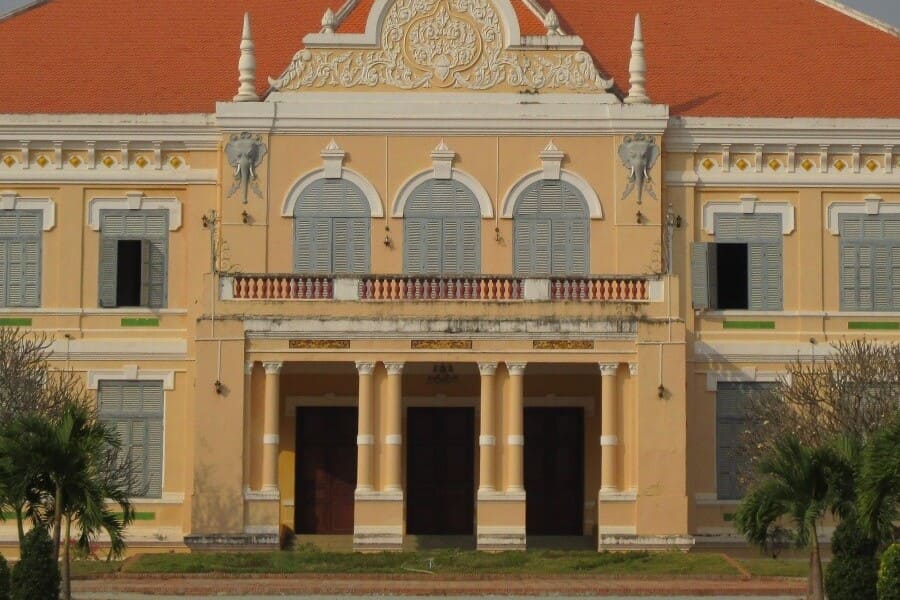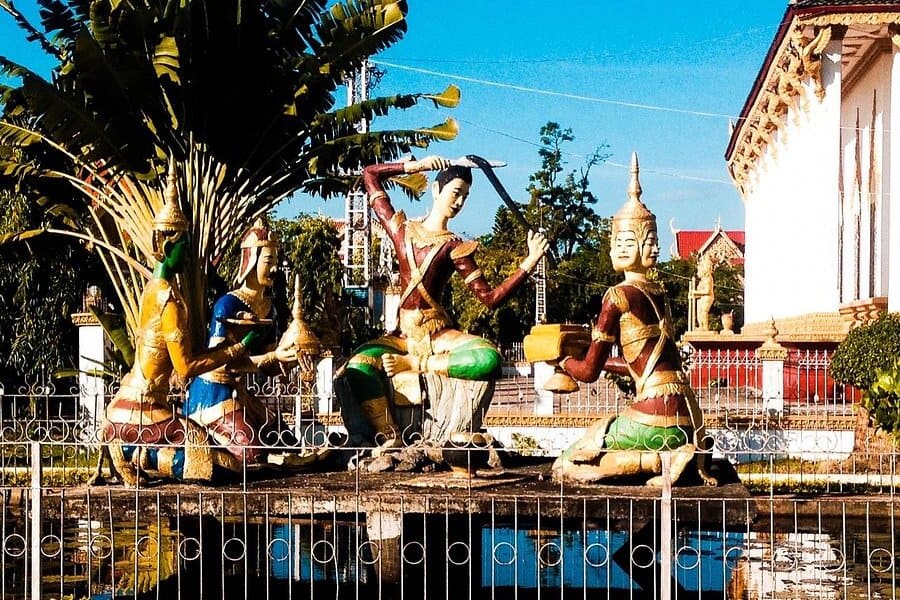Embark on a captivating journey through the heart of Cambodia's cultural landscape as we explore the vibrant city of Battambang. Tucked away in the northwest corner of the country, Battambang offers a mesmerizing blend of modern urban life, colonial-era charm, and ancient Khmer temples. Join us on a Cambodia tour as we delve into the rich tapestry of history, architecture, and culture that defines this dynamic city.
Contents
An Overview of Battambang
Nestled along the banks of the Sangkae River, Battambang serves as a bustling hub of commerce, art, and innovation, while still retaining its old-world allure. Its historic streets are lined with elegant colonial buildings, remnants of its past as a French colonial outpost. These architectural treasures stand in striking contrast to the modern developments that have emerged in recent years, creating a fascinating juxtaposition of old and new.
Amidst the urban bustle, Battambang is also home to a wealth of ancient temples and religious sites, dating back to the glory days of the Khmer Empire. From the majestic splendor of Wat Banan and Wat Ek Phnom to the mystical allure of Phnom Sampov's hilltop shrines, these sacred sites offer a glimpse into Cambodia's rich spiritual heritage and architectural mastery.
As you wander through the streets of Battambang, you'll encounter a vibrant arts scene, with galleries, theaters, and street art adorning the cityscape. Local artisans showcase their talents in traditional crafts such as pottery, weaving, and painting, providing visitors with an opportunity to immerse themselves in Cambodia's vibrant cultural traditions.
Explore Colonial Architecture in Battambang
Battambang, Cambodia, boasts a wealth of colonial architecture that reflects its rich history and cultural heritage. These elegant buildings, influenced by French colonial design, lend a distinctive charm to the cityscape, providing a glimpse into its past as a bustling colonial outpost.
Elegant Facades
One of the defining features of colonial architecture in Battambang is its elegant facades, characterized by graceful proportions, decorative moldings, and ornate detailing. Many buildings feature balconies adorned with wrought-iron railings, shuttered windows, and intricate carvings, evoking the romanticism of 19th-century France.
Stately Government Buildings
Battambang is home to several stately government buildings that showcase the grandeur of French colonial architecture. These imposing structures, often constructed with red bricks or stucco walls, feature neoclassical elements such as grand columns, arched doorways, and symmetrical facades. Examples include the Provincial Hall and the former Governor's Residence, which now serves as a museum.
Religious Structures
Battambang is home to several colonial-era churches and religious institutions that reflect the city's diverse cultural heritage. These architectural gems, often constructed with a blend of European and Khmer influences, feature soaring spires, intricate stained glass windows, and ornate altars. Examples include the St. Joseph's Cathedral and the Immaculate Conception Church.
Historic Hotels and Residences
Many of Battambang's colonial-era buildings have been repurposed as hotels, guesthouses, and private residences, preserving their architectural heritage for future generations. These charming establishments offer visitors a chance to experience the elegance and nostalgia of bygone days, with their period furnishings, high ceilings, and spacious verandas.
Quaint Shophouses
Throughout Battambang's historic streets, visitors will encounter a myriad of quaint shophouses that showcase the charm of colonial architecture on a smaller scale. These narrow buildings feature colorful facades, tiled roofs, and decorative shutters, housing a variety of shops, cafes, and businesses.
Explore Ancient Temples in Battambang
Battambang, Cambodia, is home to several ancient temples that bear witness to the region's rich cultural and religious heritage. These architectural marvels, dating back centuries, showcase the intricate craftsmanship and spiritual significance of Khmer temple architecture.
Wat Banan
Situated atop a hill overlooking the countryside, Wat Banan is often referred to as the "Mini Angkor Wat" due to its resemblance to the iconic temple in Siem Reap. Built in the 11th century during the reign of King Udayadityavarman II, Wat Banan features a series of five towers arranged in a quincunx pattern, symbolizing Mount Meru, the mythical abode of the gods in Hindu cosmology. The temple's architectural elements include intricately carved lintels, bas-reliefs depicting scenes from Hindu mythology, and towering prangs adorned with lotus bud finials.
Wat Ek Phnom
Located just a short drive from Battambang's city center, Wat Ek Phnom is a 12th-century temple complex dedicated to the Hindu deity Shiva. The temple's central sanctuary, surrounded by a series of laterite walls, features a massive sandstone linga and yoni, symbolizing the cosmic union of male and female energies. Other architectural highlights include intricately carved pediments, lintels, and tympanums depicting celestial beings, mythical creatures, and scenes from Hindu epics.
Phnom Sampov Temples
Perched atop a limestone hill overlooking the Sangkae River, Phnom Sampov is home to several ancient temples and shrines dating back to the Angkorian era. The main temple complex, known as Prasat Banan, features a central sanctuary surrounded by four smaller towers, reminiscent of the layout of Angkor Wat. The temples' architectural style combines elements of Khmer and Hindu design, with intricately carved sandstone reliefs depicting deities, celestial beings, and apsaras.
Wat Tahm Rai Saw
Located near Phnom Sampov, Wat Tahm Rai Saw is a hidden gem known for its ancient rock carvings and cave temples. The temple complex comprises a series of natural caves adorned with elaborately carved Buddha images, stalactites, and stalagmites. Visitors can explore the labyrinthine passages of the caves, marveling at the sacred artistry that adorns their walls and ceilings.
How to get to Battambang?
Getting to Battambang, Cambodia, is relatively straightforward, with several transportation options available depending on your starting point. Here are the most common ways to reach Battambang:
- By Bus: One of the most affordable and convenient options is to take a bus to Battambang from major cities like Phnom Penh, Siem Reap, or Sihanoukville. Several bus companies operate daily services to Battambang, offering comfortable and air-conditioned vehicles. The journey from Phnom Penh typically takes around 6-7 hours, while from Siem Reap or Sihanoukville, it may take 4-5 hours.
- By Taxi or Private Car: Travelers seeking a more comfortable and direct option can opt for a taxi or hire a private car to Battambang. Taxis can be arranged through hotels or transportation companies in cities like Phnom Penh or Siem Reap. Private cars offer the flexibility to stop along the way for sightseeing or refreshments and are ideal for those traveling in groups or with luggage.
- By Boat: During the wet season, it's also possible to reach Battambang by boat from Siem Reap, following the picturesque route along the Tonle Sap Lake and Sangkae River. While boat services may be less frequent and dependent on water levels, they offer a scenic and leisurely way to experience the Cambodian countryside.
- By Train: Battambang is connected to Phnom Penh via a recently restored railway line, offering travelers a unique and nostalgic way to reach the city. The train journey takes approximately 9-10 hours and provides stunning views of rural landscapes and villages along the way.
Battambang offers a captivating blend of modern city amenities, well-preserved colonial architecture, and ancient temples that reflect Cambodia's rich history and cultural diversity. Whether strolling through its bustling markets, marveling at the intricate carvings of Wat Ek Phnom, or enjoying a leisurely ride on the Bamboo Train, this city in northwest Cambodia promises a multifaceted experience that appeals to history buffs, architecture enthusiasts, and adventurous travelers alike.





